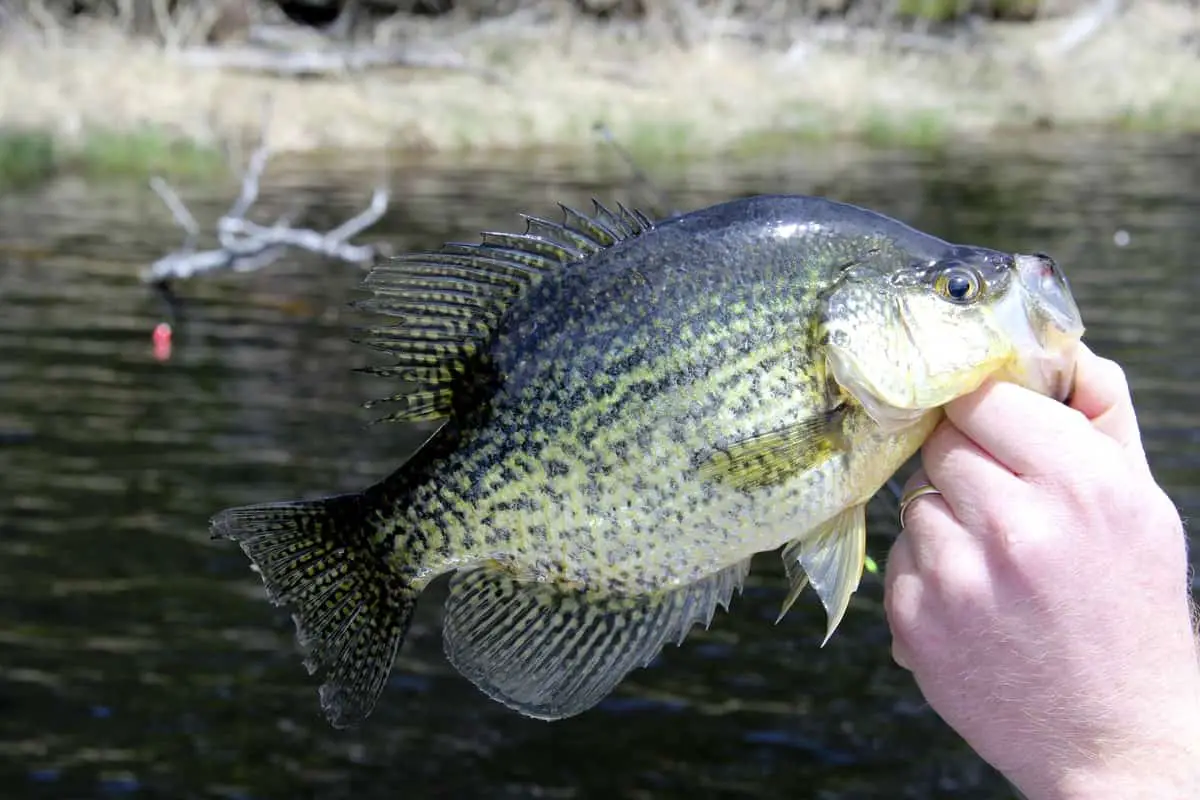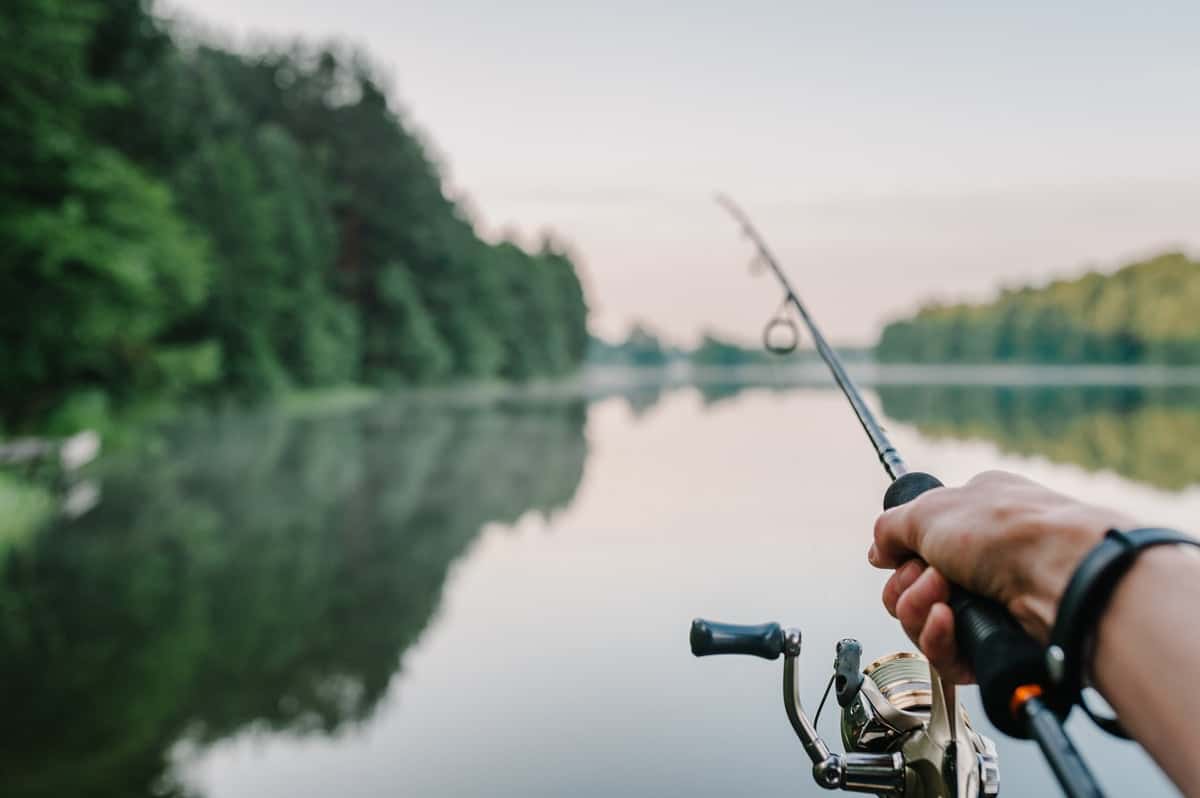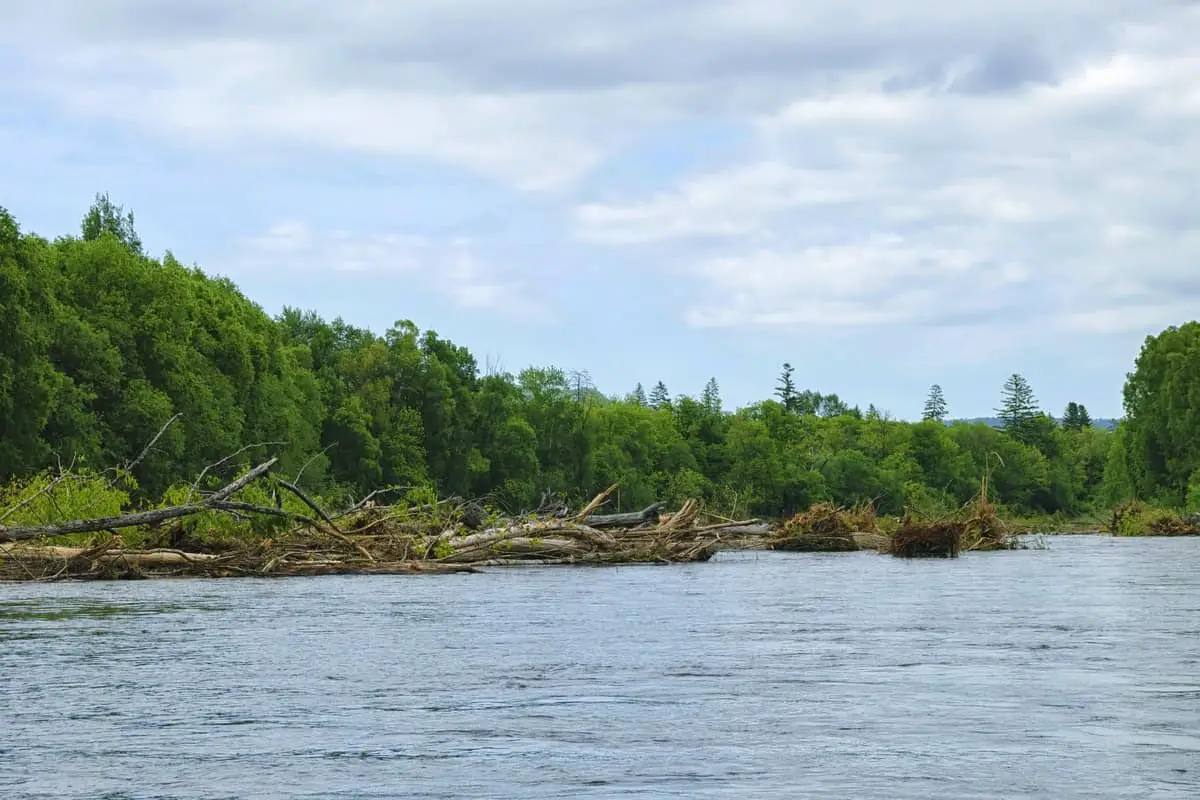
You might have heard about people fishing with a 4 lb fishing line before and thought they must be nuts. Well, there might be some method to their madness.
Fishing with a 4 lb fishing line has many benefits, especially if you’re fishing for smaller fish. But the real question is, what type of fish can you actually catch using a 4 lb fishing line?
| Freshwater Fish | Saltwater Fish |
|---|---|
| Black Crappie | Shiner Perch |
| Sunfish Crappie | Herring |
| Bluegill Crappie | Sanddab |
| Redear Crappie | Pacific Staghorn Sculpin |
| Green Crappie | |
| Redbreast Crappie | |
| Warmouth Crappie | |
| Pumpkinseed Crappie | |
| Yellow Perch | |
| Redside Shiner | |
| Peamouth Chub |
Don’t let the small size of these fish fool you.
Practicing to fish for these fish is a great way to hone your skills as an angler. And because the equipment is so lightweight, it will not break the bank to get started.
There are a few more things you will need to know about what fishing line you should use before you can start fishing.
What Type Of Fishing Line Should You Use?

If you’ve done any research on this topic, you might’ve found that the “” can be quite complicated.
If you’re fishing ultra-light, fishing line does not have to be complicated, especially if you’re starting off.
Just pick a high quality 4 lb monofilament fishing line by a trusted brand like the one from [sherpa id=”d7f193d8″], which will do the trick.
This line can be used in saltwater and freshwater without any issues.
If you’re interested in learning more about the monofilament fishing line, check out my complete guide on monofilament fishing line.
What Are The Benefits Fishing With A 4 lb Line?
There is a reason why you won’t see an angler fishing for crappie or shiners use a 20 lb test line other than the strength of the line being overkill.
When you use a stronger fishing line than the fish, then the fishing line will reduce your ability to feel bites and casting distance.
If you picked a fishing line that is too weak compared to the fish, then you will be spending a lot of time dealing with a line that keeps snapping on you.
Why I Don’t Recommend Braid Fishing Line For Beginners
You might have heard about braided fishing line is the better fishing line use. And for most cases, this is probably true.
So why don’t I recommend braided fishing line for people starting off with fishing?
Braided fishing line is more difficult to handle. It’s hard to tie knots on thinner lines, and it will be much harder with braid because it’s so much thinner than monofilament. Not to mention, braided fishing line costs way more money than monofilament.
Don’t get me wrong. Braided fishing is an excellent fishing line! It’s just not the most beginner-friendly fishing line out there.
What makes braided fishing so fantastic is that it has great performance, better casting distance, and more sensitivity.
Do You Need A Leader When Fishing Ultra-Light?
A leader line, in general, is good to have for many different reasons.
- It prevents you from losing all your gear when you get snagged
- Can reduce line visibility.
- Prevents line twisting
GETTING SNAGGED:

Normally, I would not be concerned with getting snagged when fishing ultra-light. In most cases, you’ll be fishing topwater (at the water’s surface), making it unlikely to get snagged.
That being said, there is always a possibility of getting snagged on something. In fact, getting snagged is a part of fishing.
But here are some things to consider when you’re trying to gauge the likelihood of getting snagged:
- Is there a lot of trees or logs in or around the shoreline?
- Is there a lot of greenery in or around the water?
- Are you casting your line in a location where they are localized greenery?
- Is the shoreline filled with debris and rocks?
If you’ve answered yes to any of the above, then there is a chance for you to get snagged on something. But that should not stop you from fishing.
In fact, I have a saying for situations like that:
Getting Snagged Builds Character
Getting snagged will only make you a better angler on how to manage your surroundings.
But, if you’re worried about losing all your tackle if you do get snagged, I recommend that you use a slightly strong fishing line as your mainline, like a 6 lb line and use a 4lb line as your leader.
REDUCE LINE VISIBILITY:
When fishing for these smaller fish, they tend to spook easily. Of course, some fish spook more easily than others.
This is why presentation is key for you to get some action. One of the best ways to do that is to use a fluorocarbon fishing line as your leader line.
Fluorocarbon fishing line is harder to see underwater, which gives your bait a more natural presentation. Fluorocarbon is a heavier line than monofilament, which can help keep your bait underwater, especially if you’re fishing in waters that have a bit of current.
Fluorocarbon will also help increase your sensitivity because the line does not stretch like monofilament. Lastly, fluorocarbon is slightly thicker than monofilament, making your line slightly tougher if you fish for fish with teeth or around rocks and brush that can break your a thinner line if it rubs against it.
A good fluorocarbon line that will give you good performance for the price is the [sherpa id=”bfa13ad7″].
PREVENTS LINE TWIST:
Line twist can reduce your fishing line’s sensitivity, casting, and in some cases, maybe even some from its strength.
Line twist is caused by your bait moving in the water, fighting a fish as it moves around, or even in the water’s current.
A great way to reduce line twist is to tie a 12# [sherpa id=”dbd4e62f”] between your main fishing line and your leader.
The swivel has an internal bearing that allows your leader to spin freely without twisting your mainline.
What Hook Size Will You Need?
If you’re thinking about fishing for these small fish, you will need to know the proper size hook to use.
If the hook is too big, the hook will not fit inside the fish`s mouth, making it nearly impossible to hook a fish.
If the hook is too small, it will definitely fit inside the fish`s mouth, but there is a high chance of the hook popping out of its mouth when you try to set the hook.
So what is the best size hook to use for these small fish?
| Freshwater Fish | Hook Size |
|---|---|
| Black Crappie | #8 – #12 |
| Sunfish Crappie | #8 – #12 |
| Bluegill Crappie | #8 – #12 |
| Redear Crappie | #8 – #12 |
| Green Crappie | #8 – #12 |
| Redbreast Crappie | #8 – #12 |
| Warmouth Crappie | #8 – #12 |
| Pumpkinseed Crappie | #8 – #12 |
| Yellow Perch | #2 – #6 |
| Redside Shiner | #10 – #12 |
| Peamouth Chub | #10 – #12 |
| Saltwater Fish | Hook Size |
|---|---|
| Shiner Perch | #10 – #12 |
| Herring | #10 – #12 |
| Sanddab | #6 – #8 |
| Pacific Staghorn Sculpin | 1/0 – 3/0 |
When fishing, you should always have a variety of hook sizes on hand. Fish can be picky day-to-day. A size that once worked fine for you one day may not work as well the next day.
This is why I’m a fan of buying the variety pack for hooks that offer a wide range of options. A variety pack for the smaller size [sherpa id=”3373fa46″] (#3 – #12) is a great way to start. You don’t need to go all out with some of the big-name brands for these size hooks because most of the fish you will catch is not that big.
Once you get into the slightly larger hooks, the brand name starts to matter because you need to make sure the hooks are of good quality. That is why for [sherpa id=”92daf6c4″] sizes (1/0 – 6/0), I like the Gamakatsu hooks. It’s a good “middle of the road” brand where you’re getting good quality for the price.
It’s Not About The Size. It’s About Having Fun!
Many anglers get caught up fishing for the larger fish and tend to lose sight of the smaller fish.
Fishing the smaller fish can be just as enjoyable as fishing larger fish. There are many benefits to fishing the smaller fish.
- Cheaper Tackle
- Easier to get to the spots
- Anyone can do it
Don’t wait!
Grab that fishing rod and hit the waters now. Just remember you check your local regulations for any restrictions.
If you’re interested in learning what you can catch using a 6 lb line, then check out my post on what fish you can catch using a 6 lb line for more.
Happy Fishing and Tight Lines!
